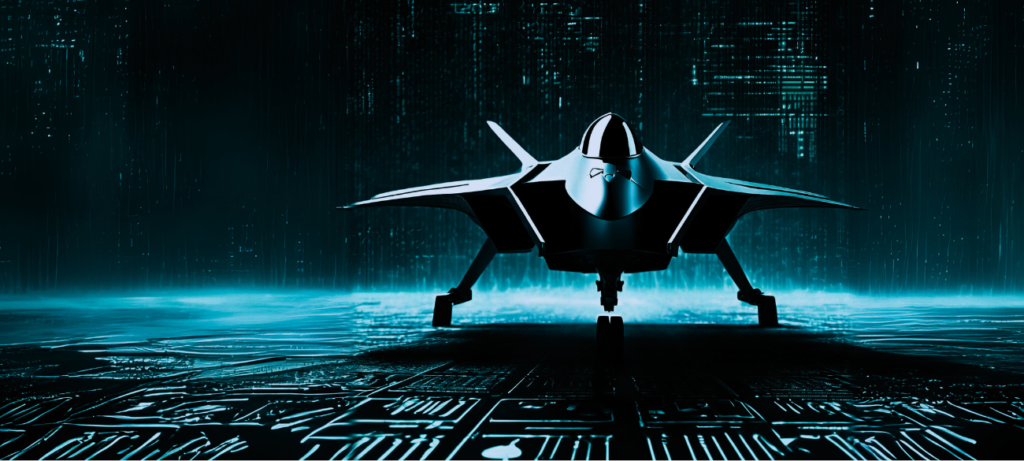In the future threat environment, air superiority will be challenged by rapid advancements in weapons systems and automation. Traditional approaches to the design of air power are becoming obsolete, and necessitate a shift toward low-footprint “kill webs” that promise enhanced agility. Non-kinetic capabilities, particularly electronic warfare and AI-enabled multi-domain integration, will prove decsivie for air forces to outmaneuver adversaries in future warfare.
AI
AI is transforming military decision-making, enabling faster and more adaptive responses. “Super OODA Loops” herald a shift from the human-centric to AI-augmented operations, which promise to fundamentally reshape air superiority, air defense, and training models. However, the challenges of cognitive overload, cybersecurity risks, and ethical concerns need to be addressed as AI reshapes air power doctrine.

Dr. Michael Raska, Assistant Professor, S. Rajaratnam School of International Studies, Nanyang Technological University, Singapore
Military decision-makers should reexamine assumptions about the role of digital capabilities and AI in future combat systems. While acknowledging the importance of information technology, they must recognize the enduring significance of traditional military technologies. A balanced approach is essential, leveraging startup expertise cautiously, as forcing commercial practices into combat capabilities development may lead to failure.

Dr. Ted Harshberger, Senior Associate (Non-Resident), Defense-Industrial Initiatives Group, Center for Strategic and International Studies, United States
Dr. Cynthia R. Cook, Director, Defense-Industrial Initiatives Group, Center for Strategic and International Studies, United States
As operational landscapes evolve, militaries recognize the urgent need to harness the potential of artificial intelligence (AI) for adaptable capabilities. Introducing the concept of the “defense metaverse,” this approach constructs a dynamic digital twin of the battlespace, integrating AI and sophisticated models to refine tactical concepts. Highlighting successes like the GhostPlay project, it emphasizes prioritizing experimentation, training, and infrastructure to optimize AI-driven military capabilities.

Heiko Borchert, Co-Director, Defense AI Observatory, Germany
Torben Schütz, Research Fellow, Defense AI Observatory, Germany
AI is making its way into military operations and warfighters will increasingly co-exist with machines with progressively more advanced autonomous capabilities. As machines make the jump from simple tools to cooperative teammates, human-machine teaming will be at the center of warfare. Understanding how to ensure trust between humans and machines is critical.

Dr. Jean-Marc Rickli, Head, Global and Emerging Security Risk, Geneva Centre for Security Policy, Switzerland
Federico Mantellassi, Research and Project Officer, Geneva Centre for Security Policy, Switzerland
Lying at the intersection of human factors and human-computer interaction, human systems integration (HSI) aims to seamlessly team humans with AI-assisted machines. Critical for this integration are trust, collaboration, and familiarity, especially in high-risk environments. Tools like digital twins and human-in-the-loop simulations enhance HSI, while standardizing principles and improving user feedback are crucial for success.

Professor Guy André Boy, FlexTech Chair Holder, CentraleSupélec, Paris Saclay University, France
Building upon Peter Singer’s assertion that humankind is losing its monopoly on fighting war, the growing impact of AI in air power is explored, highlighting applications such as fully autonomous systems, virtual co-pilots, loyal wingmen, drone swarms, and autonomous decoys. These advancements enhance combat capabilities, cost-efficiency, and survivability, despite ethical concerns.

Professor Ron Matthews, Tawazun Chair in Defense and Security Capability, Rabdan Academy, UAE, and Visiting Professor in Defense Economics, UK Defense Academy
The Israel Defense Forces (IDF) are undergoing a strategic transformation, integrating branches into a unified digital architecture driven by AI. The Momentum program enhances real-time intelligence-sharing and interactions, harnessing big data’s potential. AI promises exponential gains for the IDF’s future warfare paradigm.

Yaakov Lappin, Research Associate, Begin-Sadat Center for Strategic Studies, Israel
AI is a formidable enabler but its potential remains far from realized. There is a growing role in using AI for improving the air force’s planning and decision-making processes at the different levels of warfare, if the inherent limitations and constraints of this technology can be appropriately managed. Allowing for as much data as possible to be exploited will be key to expanding AI adoption.

Jean-Christophe Noël, Research Associate, French Institute of International Relations (IFRI) and Editor-in-Chief, Vortex
Reaching Joint All Domain Command and Control (JADC2) goals will depend on identifying core command and control (C2) needs and establishing software development plans that are achievable. Investments in people and resources will be needed to move beyond today’s manpower intensive C2 and, as a realistic goal, improve current planning processes with automation and some AI and ML.










